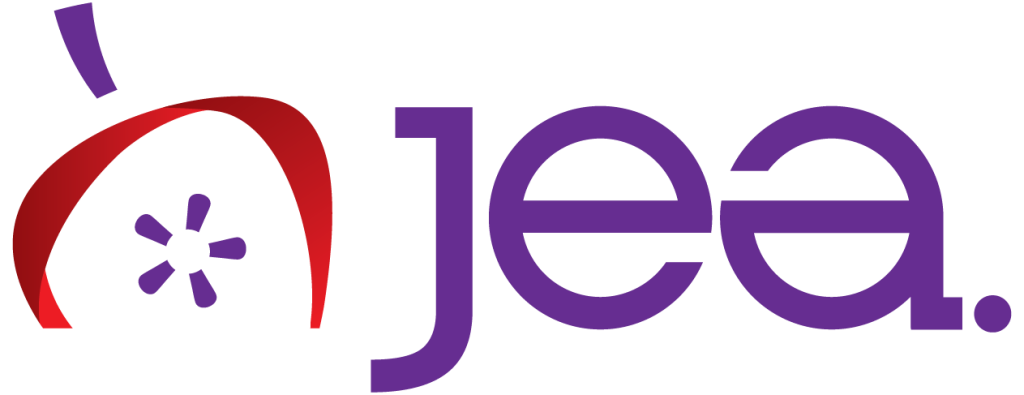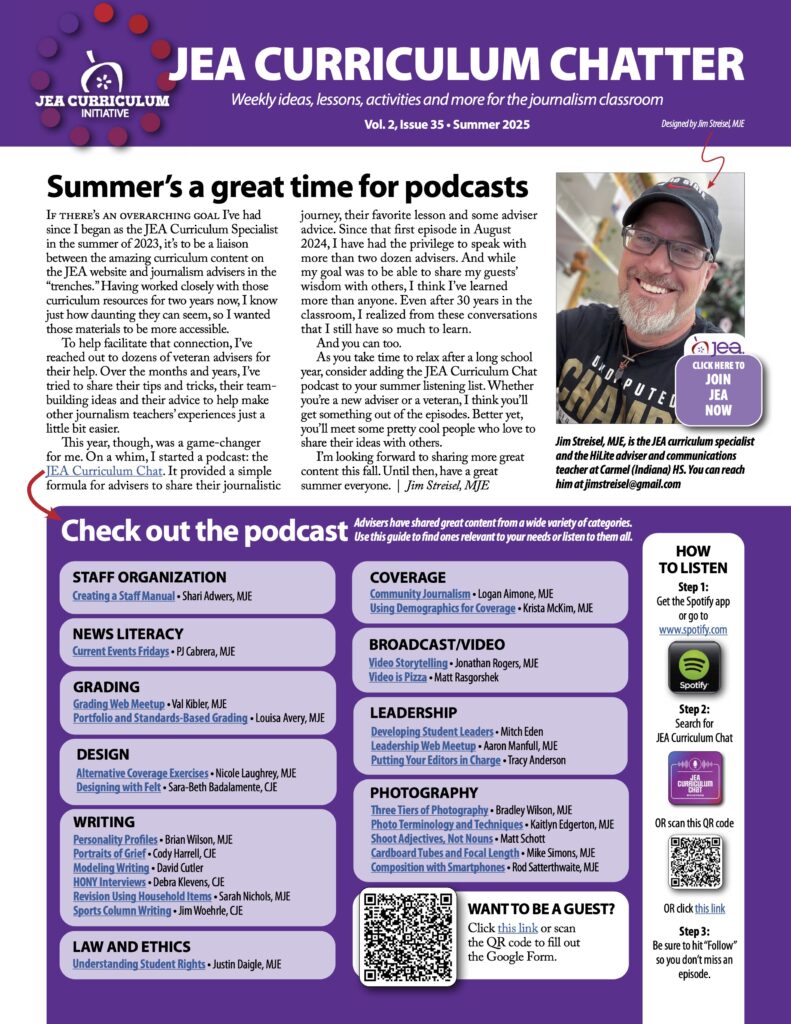Curriculum Library
The JEA Curriculum Initiative shares lesson plans across 11 different content areas, complete with learning outcomes, assessments, evaluation guides, models and alignment to standards including the Common Core and Partnership for 21st Century Skills. Today, we proudly offer hundreds of weeks worth of lessons to complement high school journalism classrooms across the country. This content is available exclusively to all JEA members.
There are many free resources available to the public on the Anywhere JEA page, and some other curriculum falls into groups easily navigated using Curriculum Maps.
Additionally, you'll find a helpful guide to the curriculum library HERE organized by category and lesson order.
Thank you for checking out the JEA curriculum library. JEA updated our website Sept. 11. We appreciate your patience as our curriculum team continues to update links to some of the downloads and activities throughout the library in the coming weeks.
Questions or concerns? Email JEA Curriculum Specialist Jim Streisel directly, or, more broadly, email staff@jea.org the name of the lesson (include the URL) you are trying to access as we may be able to send it to you directly.
Free
Weekly Lesson
Each week, we share a free curriculum lesson on a timely topic. These lessons are free to everyone for a limited period of time. After that, the lessons live in the curriculum library which is accessible only to JEA members. Click here to learn more about membership.
Interviewing basics
Students learn how to plan, conduct and conclude an interview.Curriculum Library
Organizing an editorial
In this lesson on editorial structure and how to order its parts, students will look at examples of editorials and examine how they are organized.Becoming a columnist
This is a lesson on taking the idea of column writing to the next step — becoming a columnist in for student media.Editorial voice
This is a lesson about how voice can affect how the audience perceives an editorial.Brainstorming column ideas
In this lesson, students brainstorm ideas for their columns, then narrow down their ideas conduct research on a selected topic.Evaluating editorials with a rubric
The teacher will give students copies of the rubric, then have them evaluate some sample editorials based on the rubric.Peer editing and sharing
Students will share their editorials with their groups and mark which parts help prove their point more or fit best with the original stance. Then students will have time to revise their editorials.Say something with columns
This is a lesson on sharing opinions and insights of newspaper column.Ethics in column writing
Students learn how the SPJ Code of Ethics applies to opinion writing and work in groups to discuss how they would deal with potentially difficult ethical situations in writing.Types of opinion stories
A lesson comparing three main types of opinion stories.Counterarguments
This is a debate activity using students’ topics to get an idea of what the other side thinks as a way to strengthen their argument.The difference between news and opinion
The teacher will present about the difference between opinion and news stories as well as how to determine the purpose of a piece of writing.JEA Curriculum Chat Podcast
Listen to the most recent episode.
About Curriculum & The Team
In May 2013, the Journalism Education Association began work on its curriculum initiative, creating lesson plans across 14 content areas, complete with learning outcomes, assessments, evaluation guides, models and alignment to standards including the Common Core and Partnership for 21st Century Skills.
Over the course of the next 11 months, JEA worked with 14 of its members — identified as national leaders in their area of expertise — to develop nearly 200 weeks worth of lessons to complement high school journalism classrooms across the country. Helping them were dozens of other JEA members, professionals and student journalists who volunteered their own ideas, materials and examples to benefit scholastic media advisers.
As important as this electronic resource is, it’s merely a portion of JEA’s curriculum initiative. Just as important is the ongoing commitment the organization is making to the effort. Curriculum leaders keep the curriculum current and dynamic by providing updated lesson plans and examples that reflect the newest trends and technology. They collaborate with other JEA committees such as certification and Career & Technical Education to ensure that the organization is at the forefront of defining 21st century journalism. They coordinate with our national Professional Advisory Committee to ensure our student learning objectives align with industry standards. They showcase their curriculum and lessons at national conventions and conferences. And they host online chats to not only discuss implementation of their module, but to coordinate discussion of best practices that will guide future development.
We welcome your feedback, suggestions, plaudits and corrections. Please feel free to email mfromm@d51schools.org, or contact specific curriculum leaders directly.

